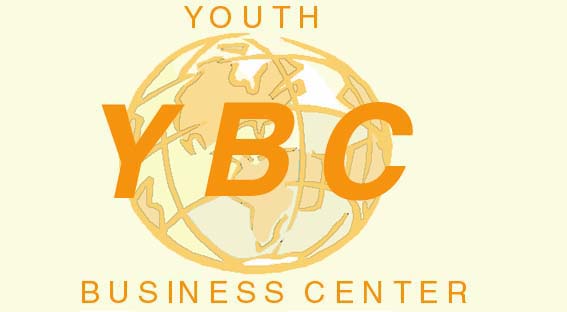
business game:
banks in action
creator = bill glass, usa
owner = junior achievment
Youth Business Center:
about banks...
The first decisions you must make as bankers are to set the interest rates on
demand deposits and loans.
1. Demand Deposits
Demand deposits are money that customers put in your bank that they can take out
"on demand" or whenever they want. Savings and checking accounts are demand
deposits-customers can obtain their money any time by writing a check, visiting
the bank, or using their ATM card at a banking machine. Since banks can not be
sure how long they can use the money in demand deposits, the interest rate they
pay on them is low.
Demand deposits in Banks in Action are called Savings. The interest rate on
Savings is public information. You can check how much your bank as well as all
your competitors are paying for Savings by looking at the Savings rate on the
Industry Report. You need to decide if you want to raise, lower, or leave this
rate the same in the next period.
If you set your bank's interest rate on Savings lower than those of your
competitors, eventually depositors may move their money from your bank to those
that offer a higher interest rate. If you set your bank's interest rate on
Savings higher than those of your competitors, over time depositors will move
their money from other banks to your bank.
Interest paid on Savings is an expense. The higher you set your rate, the more
money you will attract to your bank, but the more it will cost. Conversely, a
lower rate will reduce your expenses, but you will have less money deposited in
your bank.
2. Demand Loans
Demand loans are money that the bank allows customers to take out "on demand" or
whenever they want. Credit cards and lines of credit are demand loans-customers
can take money out of the bank at any time up to a preset limit. Since customers
have the flexibility of borrowing money and paying it back whenever they want,
they are willing to pay a high interest rate.
Demand loans in Banks in Action are called Credit Lines. Based on its financial
situation, a business is given a line of credit, which is a preset limit of how
much it can borrow. It can borrow any amount up to the line of credit limit when
it needs to. The interest rate on Credit Lines is public information. You can
check how much your bank as well as all your competitors are charging for Credit
Lines by looking at the Credit rate on the Industry Report. You need to decide
if you want to raise, lower or leave this rate the same in the next
period.If you set your bank's interest rate on Credit Lines lower than those of your
competitors, eventually borrowers will borrow more from your bank than from your
competitors since it costs them less. If you set your bank's credit rate higher
than those of your competitors, over time borrowers will pay your bank back and
borrow from them.
Interest received from Credit Lines is income. The lower you set your rate, the
more money you can loan out, but you will receive less for each dollar loaned.
Conversely, a higher rate will increase the income on each dollar you loan. You
will want to set your credit rate so that the combination of your interest rate
and the money you loan out maximizes your income.
Your decision on your Savings rate must be coordinated with your decision on
your Credit Line rate. The difference between the two rates is money that the
bank keeps to pay other expenses or as profit. You will want to set these rates
to match up the amount of money deposited in Savings with the amount loaned out
in Credit lines. You will also want to set these rates to maximize the amount of
money you keep! Remember though that your competitors are trying to achieve the
same goals, so keep them in mind as you make your decisions.